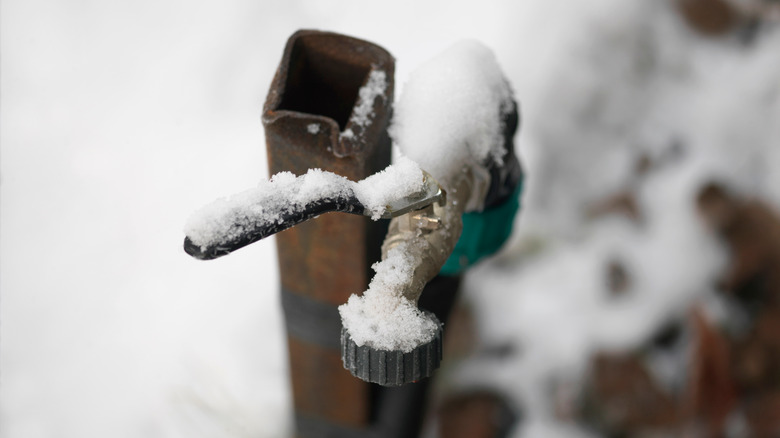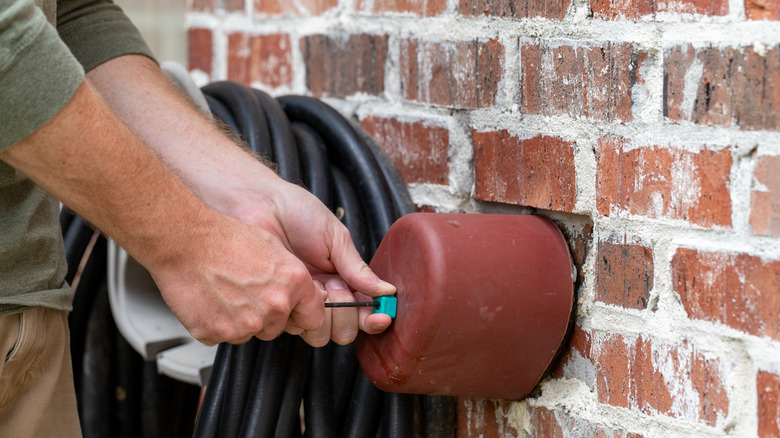What Really Happens When You Don't Use A Faucet Cover In Freezing Temperatures
When it gets cold outside, it's important to pay extra attention to the pipes in and around your home. Both indoor and outdoor pipes can freeze, burst, and cause an immense amount of property damage and flooding in the home. According to State Farm, the insurance company paid 9,000 frozen pipe damage claims at an average of more than $20,000 each during 2022 alone.
Anytime temperatures go below 32 degrees Fahrenheit, pipes can burst, but it's especially common when temperatures go below 20 degrees Fahrenheit. Outdoor faucets are especially prone to damage because they're left exposed to cold conditions. When cold air enters a spigot, it can reach the pipes and any remaining water will expand, causing them to burst. A faucet cover adds insulation and an extra barrier to protect from the cold. It can help keep the faucet's temperature higher and prevent the issues that come with freezing and bursting pipes. Since repairing pipes after freezing damage can be expensive, it's best to take preventive measures to keep your pipes and faucets safe in the first place.
If you don't take steps to prevent your pipes from freezing, don't be surprised if you experience the issues listed above. Although a faucet cover isn't foolproof — especially when temperatures get extremely low — they do provide a lot of extra protection. They're also affordable and can end up saving you thousands of dollars in repairs, so installing one is a no-brainer.
How to cover your outdoor faucet correctly
There are various methods and materials that you can use to cover an outside faucet and the process is simple and easy. There are plenty of store-bought faucet covers you can get your hands on to provide insulation to your faucet. Many are made of Styrofoam or hard plastic and could do a great job protecting your spigot from cold weather.
To install one, you'll first need to remove the hose from your outdoor faucet and store it away. Then, position the cover tightly over the faucet. Usually, there will be a rubber loop to tie around the faucet. You may need to tighten the cover further with the help of a slide lock or a drawstring in the case of a slip-over bag cover.
Store-bought faucet covers are cheap and effective, but you may also want to consider making an easy DIY faucet cover with the help of a 2-liter bottle. You can also secure an old towel, t-shirt, or cloth tightly around an outdoor spigot and cover it with a plastic bag and tape to provide insulation. These DIY options can work particularly well in a pinch if you know that temperatures will be going down but you don't have time to run to the store to buy a pre-made faucet cover.

